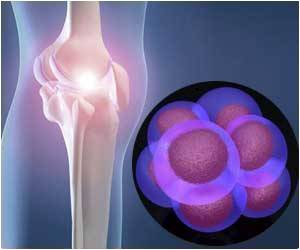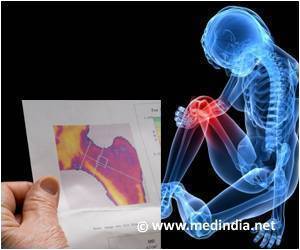Imagine engineering a liver or kidney from a patient's own stem cells! Or what of helping to regenerate tissue damaged by diseases such as osteoporosis and arthritis?

The research, a collaboration between the David Geffen School of Medicine at UCLA and the Center for Cell Control at UCLA's Henry Samueli School of Engineering and Applied Science, appears in the Feb. 17 issue of the journal Circulation Research.
"Our findings suggest a mechanism and design principle for the engineering of tissue," said senior author Dr. Linda L. Demer, a professor of medicine, physiology and bioengineering and executive vice chair of the department of medicine at the Geffen School of Medicine. "Tissue and organs are not simply collections of cells but require careful architecture and design to function normally. Our findings help explain how cells can distinguish and develop highly specific left–right asymmetry, which is an important foundation in tissue and organ creation."
Using microtechnology, the team engineered a culture surface in the lab with alternating strips of protein substrates that were cell-adhesive or cell-repellent, analogous to a floor with narrow horizontal stripes of alternating carpet and tile. Cells may encounter such surface changes when they travel through the body.The researchers observed that as the migrating cells crossed the interface between "carpet" and "tile" sections, they exhibited a significant tendency to turn right by 20 degrees, and, like a marching band, lined up in long, parallel rows, producing diagonal stripes over the entire surface.
"We had been noticing how these vascular cells would spontaneously form structures in cultures and wanted to study the process," said first author Ting-Hsuan Chen, a graduate student researcher in the department of mechanical and aerospace engineering at UCLA Engineering. "We had no idea our substrates would trigger the left–right asymmetry that we observed in the cells. It was completely unexpected.
"We found that cells demonstrated the ability to distinguish right from left and to self-organize in response to mechanical changes in the surfaces that they encounter. This provides insight into how to communicate with cells in their language and how to begin to instruct them to produce tissue-like architecture."
Advertisement
The team hopes to harness this phenomenon to use substrate interfaces to communicate with cells and instruct them to produce desired tissue structures for replacement. By adjusting the substrates, the researchers say, they have the potential to guide what structures the cells and tissue form.
Advertisement
According to the research team, this is one of the first studies to demonstrate that encountering a change in substrate can trigger a cell's preference for turning left or right. It is also one of the first studies showing that cells can integrate left–right asymmetry into a patterned structure of parallel diagonal stripes resembling tissue architecture.
"Applications for this research may help in future engineering of organs from a patient's own stem cells," Demer said. "This would be especially important given the limited supply of donor organs for transplant and problems with immune rejection."
Source-Eurekalert









